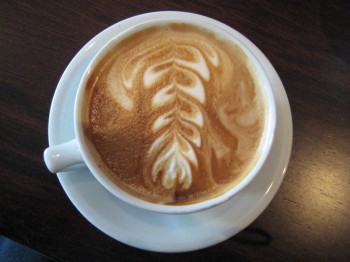Scientific explanation: the relationship between coffee and osteoporosis

For professional baristas, please follow the coffee workshop (Wechat official account cafe_style)
When times progress and we have to stay awake at every busy moment, coffee has become an indispensable pick-me-up. But while tasting coffee, have we ever thought that caffeine may be one of the risk factors for osteoporosis?
We have long believed that caffeine is one of the risk factors for osteoporosis. There are trace amounts of caffeine in daily drinks, such as coffee, tea, cola, food or medicine. Caffeine is a weak diuretic that increases the excretion of sodium and water in the kidneys, so it has a slight diuretic effect. A 1982 study pointed out that caffeine increases the excretion of calcium in the urine and promotes the secretion of calcium in the small intestine, and its effect is proportional to caffeine intake. It can be learned from this study that the more coffee you drink, the more calcium you lose, and the more likely you are to get osteoporosis. But is this a real one?
Caffeine can excite the central nervous system, so it is often used as a pick-me-up. After a long period of coffee addiction, you will feel less refreshing, and you need more coffee to achieve the previous effect, and this is because people experience the central nervous system effects of adapting to caffeine. However, the aforementioned caffeine will increase the excretion of calcium in the urine and promote the secretion of calcium in the small intestine, and the effect will not be reduced by long-term drinking coffee. In other words, from a physiological point of view, no matter how much you drink, calcium will be lost.
Although caffeine does increase calcium loss physiologically, epidemiological studies have shown that caffeine intake is not associated with bone loss and fractures in women between the ages of 20 and 50. In other words, whether young women drink caffeinated foods such as coffee or tea does not affect bone mineral density or the incidence of fractures. But other researchers observed a positive correlation between caffeine intake and the risk of hip fractures in women between the ages of 34 and 59. Older women and younger women have different trial results, which also shows that the conclusions of clinical trials are not consistent.
However, more than half of the epidemiological data show that caffeine intake is related to the bone mineral density of women over 50 years old, especially the distal radius and ulna (the bone of the arm) will be significantly reduced by caffeine intake. Recent studies have even found that caffeinated foods improve bone mineral levels in young women, but lower bone mineral concentrations in women between the ages of 70 and 80.
Although most of the data show that coffee drinking in young women does not seem to be associated with osteoporosis, researchers have also found that calcium intake (such as drinking milk, eating legumes and taking calcium supplements) is more adequate in young women. In other words, with adequate calcium intake, daily caffeine 400mg intake should not affect bone mineral density. On the other hand, older women are likely to drink more than 4 cups of coffee a day and are more likely to have the habit of smoking, which affects bone mineral density. Therefore, in order to avoid osteoporosis, older women should reduce their caffeine intake, smoke less and supplement more calcium.
So, on average, how many cups of coffee do we drink a day before it is easy to cause osteoporosis? Women between the ages of 50 and 84 who drink more than two cups of caffeine a day have a 69% increased risk of hip fractures, according to the study. Therefore, women over the age of 50 had better reduce their caffeine intake as much as possible, and not more than two cups a day if they want to drink coffee.
However, clinical trials have not reached a consistent conclusion to determine whether caffeine can cause osteoporosis and increase the risk of fracture. So at present, it can only be said that caffeine is one of the risk factors of osteoporosis, but not the cause of osteoporosis.
Important Notice :
前街咖啡 FrontStreet Coffee has moved to new addredd:
FrontStreet Coffee Address: 315,Donghua East Road,GuangZhou
Tel:020 38364473
- Prev

A test of cafes and emotional values. Where do you like to go for coffee?
Professional baristas please pay attention to the coffee workshop (Wechat official account cafe_style) Coffee has a unique flavor and unique charm, so sweeping the world caused a coffee craze. There are cafes everywhere, like a three-step cafe and a five-step hall. If you like to drink coffee in a coffee shop, do you know that the coffee brewed in each cafe has a different flavor, even the same beans?
- Next

[cold knowledge] White coffee Flat White latte Latte cappuccino Cappuccino
Professional baristas please follow the coffee workshop (Wechat official account cafe_style) do you remember the first time you went to Starbucks to order coffee? Looking at the pile of coffee names and cup size (what is grandeur!), the editor is really drunk. Here is a summary of all kinds of coffee, including the most common lattes (Latte) and cappuccinos (Cappuccino).
Related
- Why are the coffee in some coffee shops not enough after being frozen? What should I make up for my American latte cappuccino coffee after being frozen?
- How much water does it take to steam coffee by hand? Why is the coffee brewing and steaming time 30 seconds? What is the purpose of steaming coffee?
- The suspected drink contains too much caffeine! Overlord Tea Lady responds urgently!
- Starbucks rejects antique paper coupons?! Netizen: Missed marketing opportunities!
- What ratio of water temperature and ground does the smart cup method use to press coffee? The difference between brewed coffee and filtered coffee?
- What is the standard process for the purpose of coffee cup testing? What is the difference between hand-brewed coffee and cup testing?
- How to use hand-brewed coffee paragon small golden balls? How does cold coffee lock in the aroma of coffee?
- Is American coffee black? What is the difference between American coffee and drip coffee?
- Unexpected! Well-known tea beverage brand Lele Tea will withdraw from the Zhengzhou market!
- Starbucks enters the fashion and beauty industry?! Netizen: Give me an ice American eye cream

